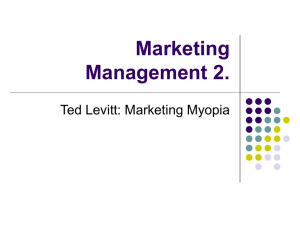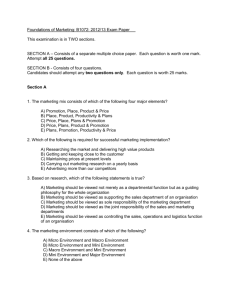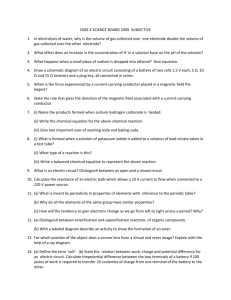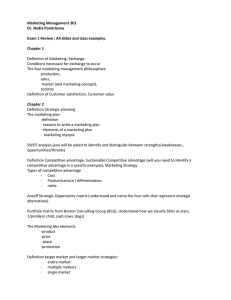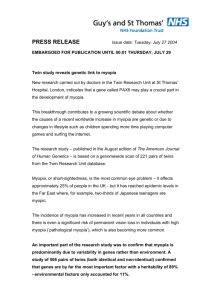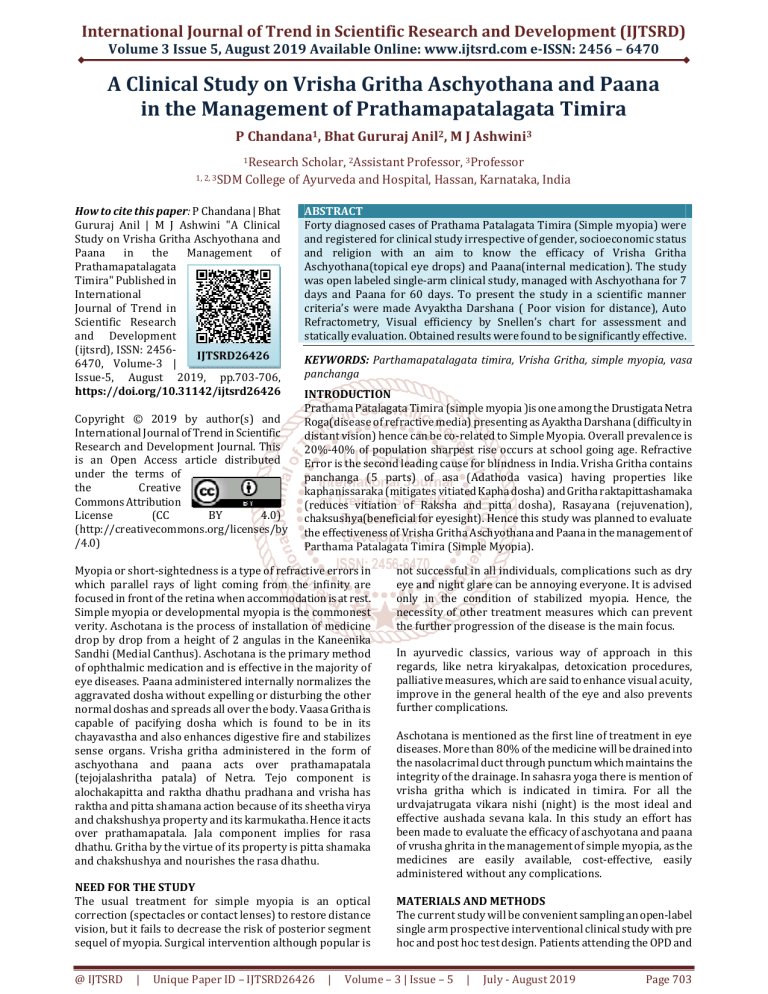
International Journal of Trend in Scientific Research and Development (IJTSRD)
Volume 3 Issue 5, August 2019 Available Online: www.ijtsrd.com e-ISSN: 2456 – 6470
A Clinical Study on Vrisha Gritha Aschyothana and Paana
in the Management of Prathamapatalagata Timira
P Chandana1, Bhat Gururaj Anil2, M J Ashwini3
1Research
Scholar, 2Assistant Professor, 3Professor
1, 2, 3SDM College of Ayurveda and Hospital, Hassan, Karnataka, India
How to cite this paper: P Chandana | Bhat
Gururaj Anil | M J Ashwini "A Clinical
Study on Vrisha Gritha Aschyothana and
Paana
in
the
Management
of
Prathamapatalagata
Timira" Published in
International
Journal of Trend in
Scientific Research
and Development
(ijtsrd), ISSN: 2456IJTSRD26426
6470, Volume-3 |
Issue-5, August 2019, pp.703-706,
https://doi.org/10.31142/ijtsrd26426
Copyright © 2019 by author(s) and
International Journal of Trend in Scientific
Research and Development Journal. This
is an Open Access article distributed
under the terms of
the
Creative
Commons Attribution
License
(CC
BY
4.0)
(http://creativecommons.org/licenses/by
/4.0)
ABSTRACT
Forty diagnosed cases of Prathama Patalagata Timira (Simple myopia) were
and registered for clinical study irrespective of gender, socioeconomic status
and religion with an aim to know the efficacy of Vrisha Gritha
Aschyothana(topical eye drops) and Paana(internal medication). The study
was open labeled single-arm clinical study, managed with Aschyothana for 7
days and Paana for 60 days. To present the study in a scientific manner
criteria’s were made Avyaktha Darshana ( Poor vision for distance), Auto
Refractometry, Visual efficiency by Snellen’s chart for assessment and
statically evaluation. Obtained results were found to be significantly effective.
KEYWORDS: Parthamapatalagata timira, Vrisha Gritha, simple myopia, vasa
panchanga
INTRODUCTION
Prathama Patalagata Timira (simple myopia )is one among the Drustigata Netra
Roga(disease of refractive media) presenting as Ayaktha Darshana (difficulty in
distant vision) hence can be co-related to Simple Myopia. Overall prevalence is
20%-40% of population sharpest rise occurs at school going age. Refractive
Error is the second leading cause for blindness in India. Vrisha Gritha contains
panchanga (5 parts) of asa (Adathoda vasica) having properties like
kaphanissaraka (mitigates vitiated Kapha dosha) and Gritha raktapittashamaka
(reduces vitiation of Raksha and pitta dosha), Rasayana (rejuvenation),
chaksushya(beneficial for eyesight). Hence this study was planned to evaluate
the effectiveness of Vrisha Gritha Aschyothana and Paana in the management of
Parthama Patalagata Timira (Simple Myopia).
Myopia or short-sightedness is a type of refractive errors in
which parallel rays of light coming from the infinity are
focused in front of the retina when accommodation is at rest.
Simple myopia or developmental myopia is the commonest
verity. Aschotana is the process of installation of medicine
drop by drop from a height of 2 angulas in the Kaneenika
Sandhi (Medial Canthus). Aschotana is the primary method
of ophthalmic medication and is effective in the majority of
eye diseases. Paana administered internally normalizes the
aggravated dosha without expelling or disturbing the other
normal doshas and spreads all over the body. Vaasa Gritha is
capable of pacifying dosha which is found to be in its
chayavastha and also enhances digestive fire and stabilizes
sense organs. Vrisha gritha administered in the form of
aschyothana and paana acts over prathamapatala
(tejojalashritha patala) of Netra. Tejo component is
alochakapitta and raktha dhathu pradhana and vrisha has
raktha and pitta shamana action because of its sheetha virya
and chakshushya property and its karmukatha. Hence it acts
over prathamapatala. Jala component implies for rasa
dhathu. Gritha by the virtue of its property is pitta shamaka
and chakshushya and nourishes the rasa dhathu.
NEED FOR THE STUDY
The usual treatment for simple myopia is an optical
correction (spectacles or contact lenses) to restore distance
vision, but it fails to decrease the risk of posterior segment
sequel of myopia. Surgical intervention although popular is
@ IJTSRD
|
Unique Paper ID – IJTSRD26426
|
not successful in all individuals, complications such as dry
eye and night glare can be annoying everyone. It is advised
only in the condition of stabilized myopia. Hence, the
necessity of other treatment measures which can prevent
the further progression of the disease is the main focus.
In ayurvedic classics, various way of approach in this
regards, like netra kiryakalpas, detoxication procedures,
palliative measures, which are said to enhance visual acuity,
improve in the general health of the eye and also prevents
further complications.
Aschotana is mentioned as the first line of treatment in eye
diseases. More than 80% of the medicine will be drained into
the nasolacrimal duct through punctum which maintains the
integrity of the drainage. In sahasra yoga there is mention of
vrisha gritha which is indicated in timira. For all the
urdvajatrugata vikara nishi (night) is the most ideal and
effective aushada sevana kala. In this study an effort has
been made to evaluate the efficacy of aschyotana and paana
of vrusha ghrita in the management of simple myopia, as the
medicines are easily available, cost-effective, easily
administered without any complications.
MATERIALS AND METHODS
The current study will be convenient sampling an open-label
single arm prospective interventional clinical study with pre
hoc and post hoc test design. Patients attending the OPD and
Volume – 3 | Issue – 5
|
July - August 2019
Page 703
International Journal of Trend in Scientific Research and Development (IJTSRD) @ www.ijtsrd.com eISSN: 2456-6470
IPD
of
shalakyatantra
Shri
Dharmasthamala
Manjunatheshara College of Ayurveda and Hospital,
Hassan.40 patients fulfilling the inclusion criteria, were
selected by convenient sampling method.
DIAGNOSTIC CRITERIA
Clinical features of Prathama patalagata timira (simple
myopia)
Avyaktha Darshana – Poor vision by distant
Diagnosed by –
1. Auto Refractometry
2. Visual efficiency by Snellen’s chart
Inclusion criteria
Patients complaints of difficulty in distant vision
Patients under the age group of 5-20 years.
Patients who are ready to sign an informed consent
form and parent assent form.
Exclusion Criteria
Pathological myopia, high myopia with degenerative and
retinal changes, associated with endocrinal and
nutritional disorders.
Myopia associated with neighboring structural
deformities like cataract, corneal opacity.
Patients suffering from any of the systemic disorders such as
hypertension, diabetes, tuberculosis, syphilis.
POSOLOGY
OBSERVATIONS AND RESULTS
The observation, results and statistical analysis of the
present study are elaborated below:
Age: The age limit of the patients in the study was 5 to 20
years. The majority (58.2%) of the patient involved in the
present study were in the age group of 15-20 years, followed
by 20.9% belong to the age group 5-10 and 15-20 years.
Gender: The present clinical study on simple myopia reveals
that here is a female group is predominance 58.1% followed
by 41.9% of the male gender group.
Religion: The present study shows that the maximum
number of patients 95.3% were Hindus followed by
Christians and Muslims of about 2.3%.
Educational status wise: Majority of the patients in this
study were undergraduates (30.2%), primary school level
(25.6%), pre-university level (16.3%), high school level
(14%).
Aggravating factors: - Majority of aggravating factors are by
watching mobile (32.6), watching computer (25.6%),
prolong reading (16.3%) myopia is aggravated by close
work, watching Television.
History of using Visual Aids: - Maximum (60.5%) of the
patients of use visual aid, Myopia cases requires proper
visual aids for the improvement and sustainment of vision.
Family history of eye disease: - Genetics plays some role in
the biological variation of the development of the eye. Hence
in the present study, there were about 32.6% of them had a
family history of Myopia
RESULTS
Completed 40 patients were taken for statistical analysis
excluding the dropouts.
For primary parameters, Repeated Measures ANOVA
was done for analyzing the difference in time of
significant change.
For primary parameter, Paired T-test was also done to
know significance at BT and AT as post hoc
RESULT ON VISUAL ACUITY FOR DISTANT VISION OF 80 EYES
REPEATED MEASURE ANOVA
Table No.1- Showing the repeated measure ANOVA result on visual acuity for the distant vision of 80 eyes
Variable N
Mean
Df
F value P-value Greenhouse-geisser error df Remarks
DV-BT
51.600
DV-15D
54.250
DV-30D
57.900
80
2.517 36.542
0.000
198.807
S
DV-45D
61.600
DV-60D
63.650
DV-75D
63.725
The mean value on visual acuity for the distant vision of 80 eyes for 40 patients at each level of study including follow up, it is
found that the mean value of distant vision before treatment has improved from 51.600% to 63.7250% at Greenhouse-guesser
Error at df 198.807 which is statistically significant at p-value < 0.001.
@ IJTSRD
|
Unique Paper ID – IJTSRD26426
|
Volume – 3 | Issue – 5
|
July - August 2019
Page 704
International Journal of Trend in Scientific Research and Development (IJTSRD) @ www.ijtsrd.com eISSN: 2456-6470
Table No2: Showing the repeated measure anova result on best-corrected visual acuity for the distant vision of 80
eyes
Variable
N
Mean
Df
F value P value Greenhouse-geisser error df Remarks
Df
BCVADV-BT
90.025
BCVADV-15D
90.125
BCVADV-30D
90.725
80
2.328 20.660
0.030
183.921
S
2.328
BCVADV-45D
90.612
BCVADV-60D
90.787
BCVADV-75D
90.800
The mean value of best corrected visual acuity for distant vision of 80 eyes for 40 patients at each level of study including
follow up it is found that mean value of distant vision before treatment has not much improved from 90.0250% to 90.8000 % at
Greenhouse-giesser Error at df 183.921 which is statistically not significant at p value < 0.001
Table No 3: Showing the repeated measure anova result on visual acuity for distant vision for both eyes
Variable
N
Mean
Df
F value P value Greenhouse-geisser error df Remarks
BE DV-BT
60.650
BE DV -15D
60.275
BE DV-30D
63.700
40
2.608 13.556
.000
101.712
S
BE DV-45D
66.250
BE DV-60D
67.125
BE DV-75D
67.275
The mean value of visual acuity for the distant vision for both eyes of 40 patients at each level of study including follow up, it is
found that mean value of distant vision before treatment has improved from 60.6500% to 67.2750 % at Greenhouse-giesser
Error at df 101.712 which is statistically significant at p value< 0.001
Paired‘t’ test
Table No4: Showing the paired t test result on visual acuity for distant vision of 80 eyes
BT-AT Mean BT Mean AT Mean diff
SD
SE
t value Df P value
DV
51.600
63.650
-12.05
14.451
1.615
-7.458 79
0.008
It was observed that there was a significant difference in mean values of before and after treatment in relation to visual acuity
for the distant vision of 80 eyes of 40 patients with a mean difference of-12.05 , which is statistically significant as the P-Value
<0.008
Table No5: Showing the paired t test result on visual acuity for distant of both eyes
BT-AT Mean BT Mean AT Mean diff
SD
SE t value Df P value
DV
60.6500
67.1250
-6.475
9.732 .360 -4.208 39
0.008
It was observed that there was a significant difference in mean values of before and after treatment in relation to visual acuity
for the distant vision of both eyes in 40 patients with a mean difference of-6.475, which is statistically significant as the P-Value
<0.008
DISCUSSION AND CONCLUSION
On the basis of the present study, the following conclusions
can be drawn
Timira, kacha and linganasha are the progressive stages
of a disease. When vitiated dosha lodges in
Prathamapatala as of netra it is termed as Timira and it
is sadhya and in this study, Prathamapatalagata Timira
is correlated with Simple myopia.
Simple myopia is the most prevalent condition in the
present era. It limits the
Occupational choices with substantial social,
educational, economic impact and contributes to
increased risk of vision-threatening conditions.
After completion of the study it can be concluded that
age, education, aggravating factors, visual aid and family
history have a significant role in the development of
Timira (simple myopia)
@ IJTSRD
|
Unique Paper ID – IJTSRD26426
|
Clarity of vision was found to be improved with research
drug.
The mean value on visual acuity for the distant vision of
80 eyes of 40 patients at each level of study including
follow up has improved from 51.600% to 63.725%
which is statistically significant at p value < 0.001.
The mean value of visual acuity for the distant vision for
both eyes of 40 patients at each level of study including
follow up t has improved from 60.6500% to 67.2750 %
which is statistically significant at p value< 0.001.
Effect of Vrisha Ghrita Paana and Aschyothana is found
to be significantly effective in reducing the signs and
symptoms of Prathamapatalagata Timira/ Simple
myopia
Volume – 3 | Issue – 5
|
July - August 2019
Page 705
International Journal of Trend in Scientific Research and Development (IJTSRD) @ www.ijtsrd.com eISSN: 2456-6470
References
[1] Sushruta.Sushruta samhita- edited and translated by
PriyaVrat Sharma. Varanasi: chaukambha Sanskrit
publications;1st ed 2001.vol III
[2] Vagbhata’s Ashtanga hridaya- translated by prof
K.R.Srikanth murthy.Varanasi:Krishnadas Academy; 3rd
ed 2000
[3] AK Khurana-Comprehensive Ophthalmology by, 5th
ed.NewDelhi: New Age International (P) Limited,
Publishers; reprint 2014
[4] Sethi , kartha gp, “prevalence of refractive error among
school children(12-17 years)of Ahmedabad city”.
Indian journal of community medicine,2000:25181183
[5] Goswmi A, Ahmead E, Shaha PL, Roy IS:” An
epidemiological pattern of case of refractive error”,
JIMA,1979:72(10):227-228
[6] W.H.O. Data on blindness throughout the world. W.H.O.
Chronicle 1979; vol.33,no.718,275
[7] Chatterjee pr,Roy chaudhria, Dattacommunity eye
health journal/Indian medical assoc.1999;97:297-298.
blindness preventing in children: report of a scientific
meeting. Genev,WH, 2000:77.
[9] R.Dandona, L.Dandon. british journal ophthalmology
2003;87:263-265
[10] Sushruta.Sushruta samhita- edited and translated by
PriyaVrat Sharma. Varanasi: chaukambha Sanskrit
publications;1st ed 2001.vol III
[11] AK Khurana-Comprehensive Ophthalmology by, 5th
ed.NewDelhi: New Age International (P) Limited,
Publishers; reprint 2014
[12] http://www.ncbi.nlm.nih.gov/pmc/articles/PMC2720
680/
[13] Vruddha Vagbhata, Uttataratantra. Ch.13, Ver. 90.In:
Ed. Acharya H.P, editor. Ashtanga Hrudaya with
SarvangaSundara commentary by Arundatta and
Ayurvedarasayana Commentary by Hemadri. (Reprint)
ninth ed. Varanasi; Chaukhamba Orientalia: 2005:
p823-824
[14] Anonymous. The Formulary of India second edition.
New Delhi; Government of India Ministry of Health and
Family Welfare; 2003.p. 2
[8] World health organization. Globle initiative for the
elimination of avoidable blindness. Geneva, WHO
@ IJTSRD
|
Unique Paper ID – IJTSRD26426
|
Volume – 3 | Issue – 5
|
July - August 2019
Page 706

